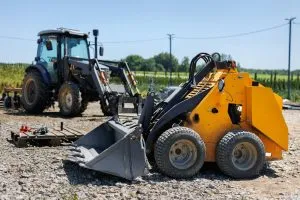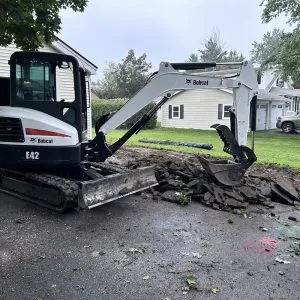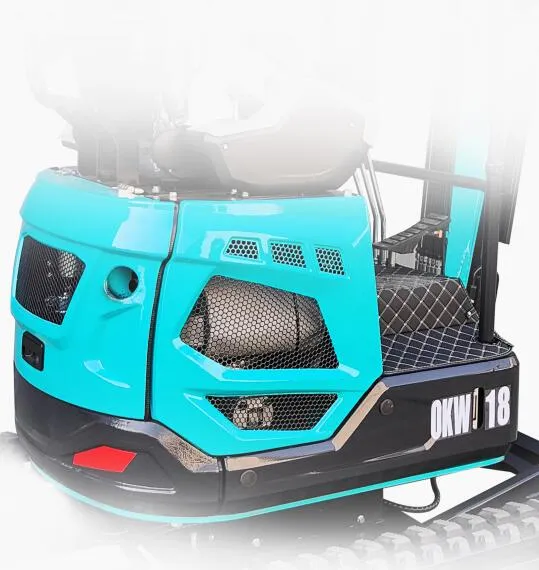Excavators can be used in a wide variety of workplaces, but there are some things you shouldn’t do. In this blog post, we’ll remind you what not to do when using an excavator. If you’re not careful, you could damage your excavator or injure yourself. So what should you avoid on an excavator? Read on to find out!

What cannot be done on the excavator?
(1) Don’t overload your excavator, which is probably the most important thing to remember. If your excavator is overloaded, you could damage the machine or injure yourself. Overloading an excavator is one of the main things you should avoid. If you overload it, you risk damaging the machine or hurting yourself. Never exceed the maximum capacity of the excavator.
(2) Another thing to avoid is using your excavator for tasks it is not suitable for; excavators are great for digging and moving earth, but they should not be used to lift heavy objects Or things like demolishing buildings; using the excavator for the wrong task can damage the machine or cause an accident.
(3) You should also avoid operating your excavator in unsafe conditions. The excavator may fall over if the ground is too soft or unstable. Before operating your excavator, ensure the area around you is safe.
(4) Make sure you have the proper training before operating the excavator. If you don’t know how to use the machine, you could end up in an accident; always read the manual and follow the manufacturer’s instructions.
If you avoid doing these four things, you can operate your excavator safely and enjoy all its benefits. Excavators are great machines, but you must be careful when using them. Follow these tips, and you’ll be able to operate your excavator smoothly.

How to operate the excavator safely?
Before operating the excavator, first, check the surrounding conditions. When the excavator is walking, the working device should be retracted as far as possible, close to the centre of the fuselage, to maintain stability. Avoid driving over obstacles such as tree stumps and rocks as much as possible to prevent track deformation. If you need to drive over an obstacle, ensure the centre of the track is over the obstacle.
Excavator operation technology
Check your surroundings first. When rotating, please pay attention to the surrounding obstacles and terrain, and work safely; during operation, confirm the front and rear directions of the track to avoid tipping or collision; try not to turn the final drive towards the excavation direction otherwise it is easy to damage the travelling motor or hose; during the operation, Ensure that the left and right tracks are in full contact with the ground and improve the dynamic stability of the whole machine.
Slope levelling operation
In the process of surface trimming, laying the machine flat on the ground to prevent the machine from shaking, grasping the coordination of the movements of the boom and stick, and controlling their speed is very important for surface trimming.
Loading operation
The body should be in a horizontal and stable position otherwise it will be difficult to precisely control the rotation and unloading, thus prolonging the working cycle time; the body and the truck should keep an appropriate distance to prevent the rear of the body from colliding with the car when turning 180 degrees; the left-handed installation should be adopted as much as possible, with a wide field of vision and easy operation. Efficient. At the same time, correctly grasp the rotation angle to reduce the rotation time; the position of the truck is lower than the excavator so as to shorten the lifting time of the boom and have a good line of sight; load the sand and gravel first, and then enlarge the stone, which can reduce the impact on the trunk.

Effective mining methods
The digging force is large when the bucket cylinder is at a 90-degree angle with the connecting rod, stick cylinder and stick. When the bucket teeth form an angle of 30 degrees with the ground, the digging force is reasonable, that is, the soil cutting resistance is minor; when digging with the stick, make sure that the angle of the stick is between 45 degrees in the front and 30 degrees in the back, and use the boom and shovel at the same time. Buckets can improve excavation efficiency.
Digging rocks
Digging rocks with a bucket can cause significant damage to the machine and should be avoided as much as possible. When searching is required, the position of the fuselage should be adjusted according to the direction of the crack of the rock so that the bucket can be shovelled in smoothly for excavation; the bucket teeth are inserted into the cracks of the rock, and the excavation force of the stick and bucket is used to excavate (pay attention to the sliding of the bucket teeth); When lifting with a hydraulic excavator, the unbroken rock should be broken first, and then excavated with a bucket.

How to protect the excavator in the rainy season?
It’s that time of year again – the rainy season is here! With that comes the risk of damaging your excavators, heavy rain and flooding can do a lot of damage to your equipment, so it’s important to take steps to protect them of. We’ll discuss some tips for protecting your excavator during the rainy season, staying safe and keeping your machine running smoothly!
One of the best ways to protect your excavators during the rainy season is to cover them up. If you have a garage or shed, make sure your excavator is parked inside when not in use. If you don’t have an indoor space to protect your machines, you can buy a tarp or other type of cover and put them on when they’re not in use, this will help keep them dry and protected from the outside world .
Another important tip is to regularly check your excavator for signs of damage. Be sure to inspect the chassis and all moving parts for any signs of rust or other wear. If you notice any damage, be sure to repair it promptly to avoid further damage in the future.
Lastly, making sure to keep your excavator well-fueled and ready to go may seem like a simple matter, but it’s easy to let things like this slip through the hustle and bustle of the rainy season. By keeping your machine fueled and ready, you’ll be able to avoid as many surprises as possible on the job.
By following these simple tips, you can help keep your excavator safe from the damaging effects of the rainy season and keep your machine running smoothly!






